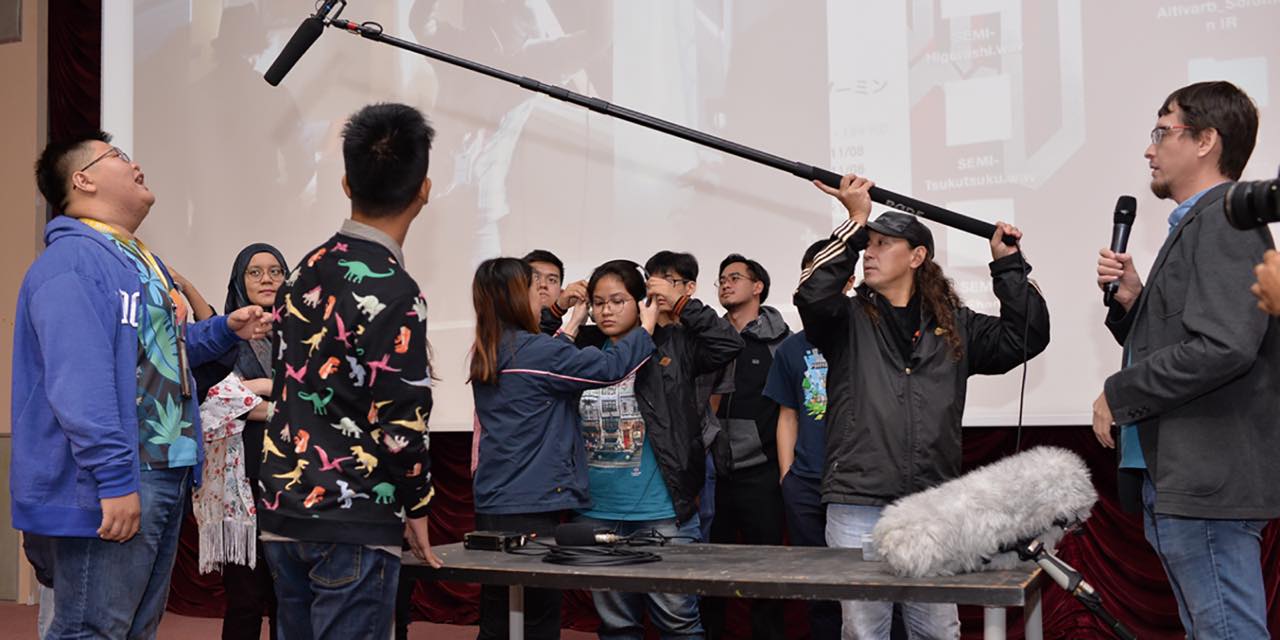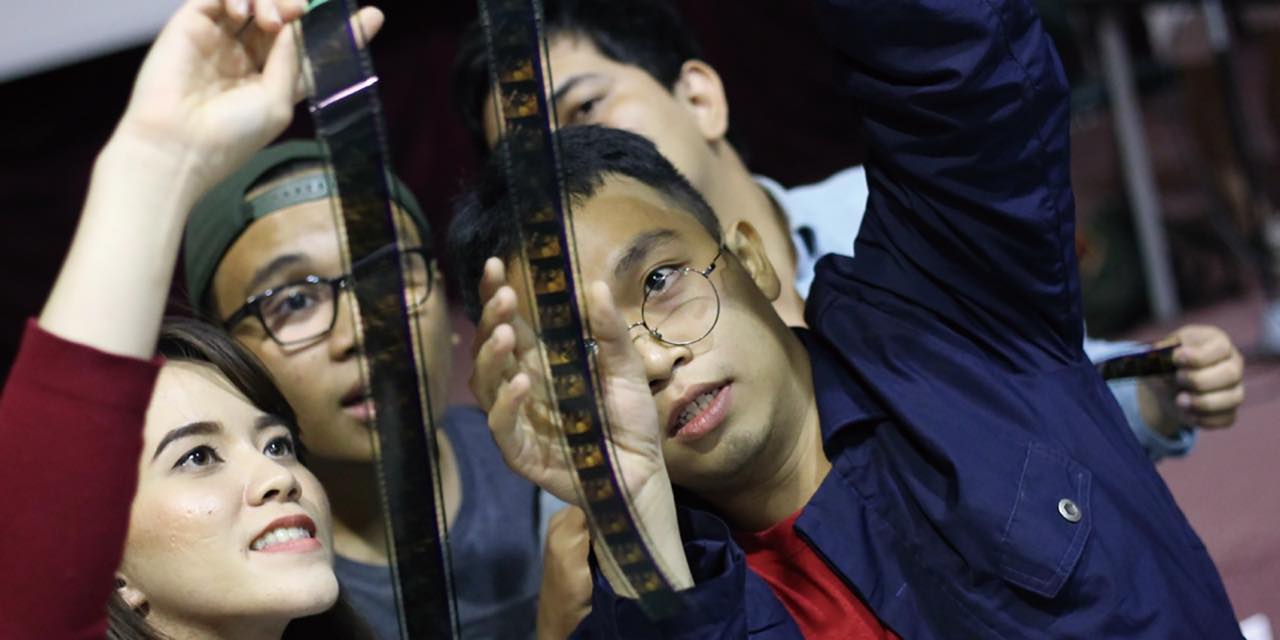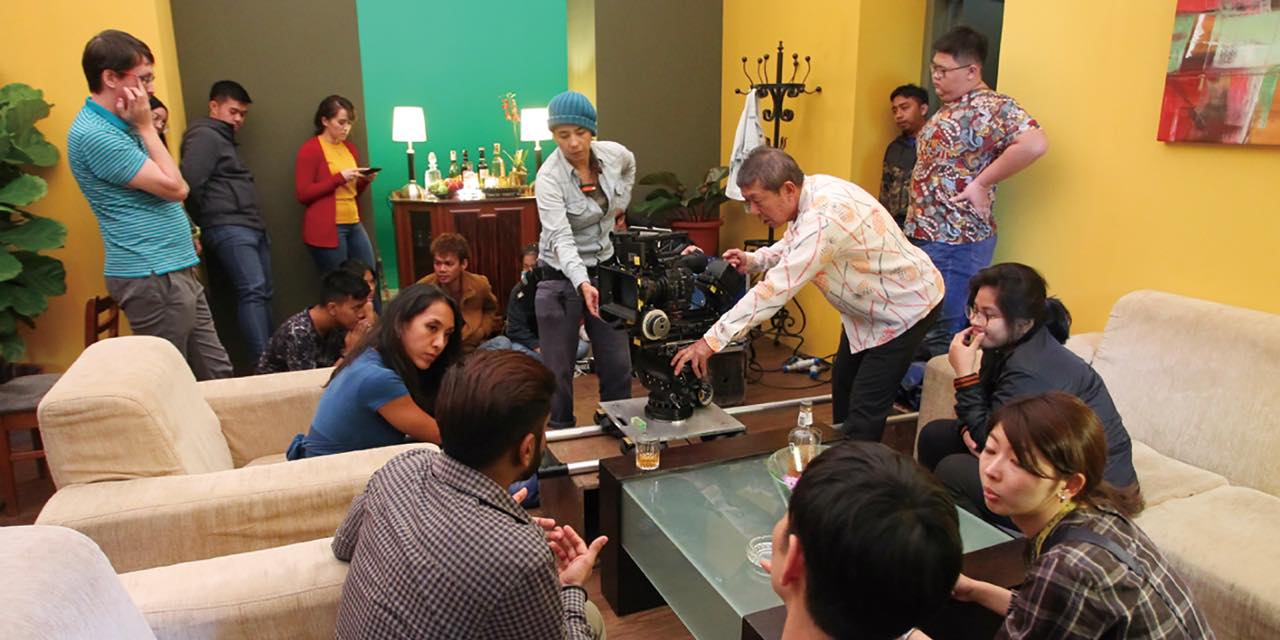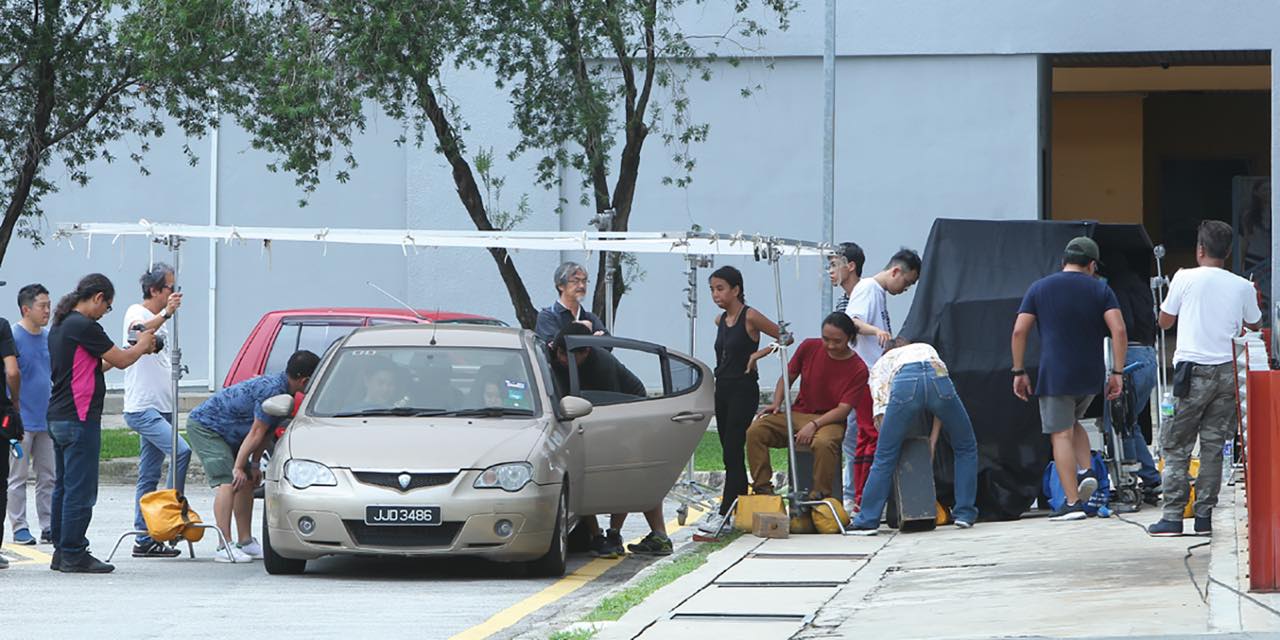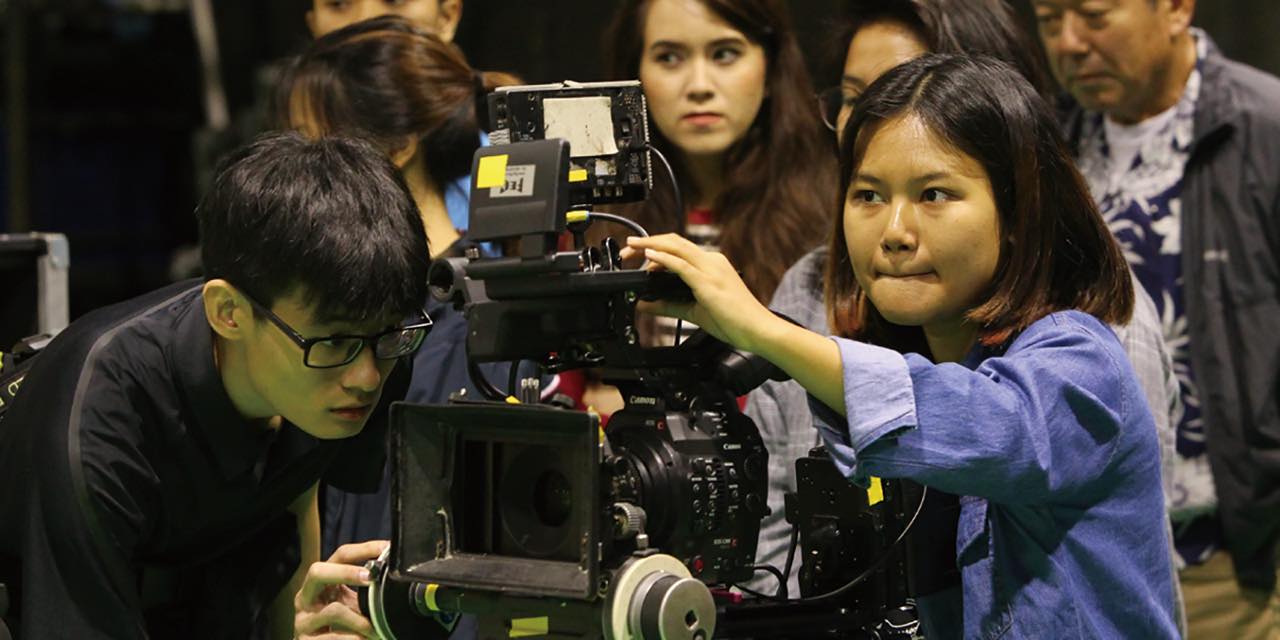Background and Objectives
It would probably not be wrong to say that Japanese cinema of recent years has received a decent level of international critical acclaim, given the number of films that have been honored with nominations and awards at international film festivals. The 71st Cannes International Film Festival Competition included Hirokazu Kore-eda’s Shoplifters and Ryusuke Hamaguchi’s Asako I & II from Japan, and Shoplifters won the highest honor with the Palme d’Or. These achievements may be attributed to the historical fact that Japan’s film industry inherited cinematic expression techniques from the Studio era, which is now commonly considered to be the Golden Era of Japanese cinema with masterpieces from internationally renowned filmmakers including Akira Kurosawa, Kenji Mizoguchi, and Yasujiro Ozu, and then proactively applied advance digital technologies to film production. With this approach, Japanese film took advantage of Japan’s status as an international leader in the age of digital technology. The Tokyo University of the Arts Graduate School of Film and New Media was established in 2005 in the midst of the transition from film to digital production, and the school is noteworthy as the first full-fledged cinema education and research center within a national university in Japan. Over the last few years, the Graduate School of Film and New Media has undertaken research projects on film education systems based on new types of film production that are suited to the digitalized cinema environment. Completed in fiscal 2015, “Digital Cinema Production Workflow Guidelines” is one of the outcomes of this research.
The Graduate School of Film and New Media is in the process of building its own global network in the area of cinema education through international cross-appointment agreements and joint workshops with prominent cinema education institutions including École Nationale Supérieure des Métiers de l’Image et du Son (La Fémis), University of Southern California (USC), LASALLE College of the Arts (Singapore) and Tehran University of Art. In holding this workshop, we recruited students not only from the global network that our graduate school has built, but also from ASEANbased film education institutions that belong to the International Association of Film and Television Schools (CILECT).
The cinema of Malaysia, the host country of this program, remains relatively unknown on the international scene, with the exception of a handful of world-famous filmmakers such as Ming-liang Tsai. It may well be said that Malaysian cinema is still at the developing stage. However, the situation is changing and the Malaysian film industry’s momentum within Asia is in the spotlight, as the entertainment industry entered the Malaysian government’s large-scale Iskandar urban development plan in the Johor Bahru region. Another characteristic of Malaysian cinema is that the toughest obstacle, the language barrier, to be overcome when it comes to the world market, is relatively low. This is because a wide variety of languages including Malay, English, and Chinese are spoken in this country.
Malaysia’s geographic proximity to Singapore, one of the economic giants of Asia, also cannot be ignored. Malaysia’s motion picture culture and cinema industry clearly have plenty of potential, given the lively economic, cultural and social exchanges already taking place.
This project enables youth from ASEAN countries to directly experience passion for film production with the goal of embodying the further possibilities of cinematic creativity and Japan’s visual technology and artistic expression through instruction from Japanese leaders in the areas of cinematography, production design, sound and editing. This is accomplished in the ideal environment of a fully equipped film studio with cooperation from Multimedia University, Malaysia’s renowned film school, and OLM Asia SDN BHD, the Malaysian operations for a Japanese company. The film production workshop offers valuable opportunities to gain a deeper understanding of Japanese culture. In addition, we have great expectations that it can become a foothold for film production networking for the next generation in ASEAN countries.
Team
| From Japan | |
| Instructors | Katsumi Yanagijima[Director of Photography; Professor Emeritus, Tokyo University of the Arts ] |
| Toshihiro Isomi[Production Designer; Professor, Tokyo University of the Arts] | |
| Keiko Mitsumatsu[Production Designer; Adjunct Lecturer, Tokyo University of the Arts] | |
| Masaki Murakami[Editor] | |
| Kenichi Fujimoto[Recording Engineer] | |
| Assistant Instructors | Mami Morisaki[Cinematography] |
| Keisuke Ikeda[Lighting] | |
| Naoki Tanaka[Translator] | |
| Director | Shogo Yokoyama[Assistant Professor, Tokyo University of the Arts] |
| Assistant Director | Hiroyuki Takebayashi[Freelance Director] |
| Project Producer | Mitsuko Okamoto[Professor, Tokyo University of the Arts] |
| Workshop Assistant | Nana Kitaji[ Student, Tokyo University of the Arts, Graduate School of Film and New Media, Department of Film Production, Art Direction Course] |
| Planning and Administration | Tokyo University of the Arts Graduate School of Film and New Media |
| General Management | UNIJAPAN |
| Project Chief | Takenari Maeda[Group Manager, International Promotion Group] |
| Project Administrator | Kiyomi Nakazaki[ International Promotion Group] |
| From Malaysia | |
| Local Coordination | Kentaro Kusaka[OLM Asia SDN BHD] |
| Production Staff | Quinn Amalore |
| Art Assistant | Mary Grace Pacat |
| Supporting Organizations | OLM Asia SDNBHD, Multimedia University, Malaysia Digital Economy Corporation (MDEC), IMAGICA GROUP, WONG ENTERPRISE, Professional Film Equipment, IMPIAN PRODUCTION, GIGGLES&GEEKS |
| From Singapore | |
| Instructor | Hideho Urata[Director of Photography; Professor, LASALLE College of the Arts] |
| Assistant Instructor | Tan Jin Lin Jesmen |
Participating Educational Institutions:
Mahakarya Institute of the Arts Asia (Brunei)
Filkhmer Studio (Cambodia)
Jakarta Institute of Arts (Indonesia)
Luang Prabang Film Festival (Laos)
Multimedia University (Malaysia)
Wathann Film Festival (Myanmar)
University of the Philippines Film Institute (Philippines)
LASALLE College of the Arts (Singapore)
Silpakorn University (Thailand)
The University of Theatre-Cinema HCMC (Vietnam)
Instructor Profiles
-
Katsumi Yanagijima (Director of Photography; Professor Emeritus, Tokyo University of the Arts)
-
Hideho Urata (Director of Photography; Professor, LASALLE College of the Arts)
-
Toshihiro Isomi (Production Designer; Professor, Tokyo University of the Arts)
-
Keiko Mitsumatsu (Production Designer; Adjunct Lecturer, Tokyo University of the Arts)
-
Masaki Murakami (Editor)
-
Kenichi Fujimoto (Recording Engineer)
Project Overview
《Project Name》
ASEAN2018 Digital Cinema Production Workshop in Malaysia
《Dates》
November 12 (Mon.) to 16 (Fri.), 2018
《Venues》
Cinematography workshop/master class
- Multimedia University studio (set shooting)
- Multimedia University campus (location shooting)
Production Design/Editing/Sound master classes
- Multimedia University E-theater
《Participants》
24 students
《Students’ Affiliation》
Mahakarya Institute of the Arts Asia (Brunei) 2 students
Filkhmer Studio (Cambodia) 2
Jakarta Institute of Arts (Indonesia) 2
Luang Prabang Film Festival (Laos) 2
Multimedia University (Malaysia) 4
Wathann Film Festival (Myanmar) 2
University of the Philippines Film Institute (Philippines) 2
LASALLE College of the Arts (Singapore) 4
Silpakorn University (Th ailand) 2
Th e University of Th eatre-Cinema HCMC (Vietnam) 2
《Languages》
Japanese, English (consecutive interpretation)
Details of the Workshops
《Day 1 (November 12) : Orientation》
The opening ceremony for the workshop was held at Multimedia University’s E-theater.
Project director Yokoyama explained the workshop goals and a representative from UNIJAPAN, the project’s management organization, delivered the welcome address, followed by greetings from Multimedia University Faculty of Creative Multimedia Dean Wong Chee Onn and Janice Lim, Head of Animation & New Media Creative Content & Technologies at Malaysia Digital Economy Corporation (MDEC).
The orientation included self-introductions of the instructors and participants, introductions of the assistants, explanations of the workshop aims and content, announcement of the team members for the cinematography workshop component, and review of the schedule. After the orientation, the group moved to the Multimedia University studio for the cinematography workshop and master classes.
《Cinematography Workshop & Master Class》
Based on prior discussions with the instructors, the topic for this cinematography workshop was “How does cinematic expression change with the camera setup? (composition, position, etc.)” Instructor Yanagijima wrote the shooting script used in the workshop to enrich and clarify the students’ understanding and experiences in the cinematography workshop. The setting for the studio scene was a room in an apartment, and the on-location set was a parking lot (inside to outside a vehicle).
On the first day of the workshop, each group was given an explanation of the actors’ movements (blocking), script commentary, and the setting. The students worked in their groups to split up the script into scenes and discuss their roles during the workshop.
Also, the instructors were careful to give detailed explanations of the camera and lighting equipment, putting to use lessons learned from past workshops. As a result, all of the participants were able to engage in the workshop with detailed knowledge about the distinctive qualities and proper handling for the equipment used. Then, they set up the base lights and confirmed the workflow as well as the roles for each student from Day 2 onwards.
《Days 2-3 (November 13 and 14) : Cinematography Workshop》
Days 2 and 3 followed the schedule created by the organizers. The specific content was left up to the on-site judgement of instructors Yanagijima and Urata, and each instructor structured the workshop based on the workshop progress and the participants’ requests and aptitude.
Instructor Yanagijima led the studio set shoot, and instructor Urata was in charge of the onlocation shoot. The participants were divided into A and B teams, which were further split into teams for studio and location shooting.
For the studio shoot, the blocking was based on the script distributed in advance and participants in each team decided who was in charge, and they set up the camera angles and lighting through discussions with the directing assistant. Similarly, the camera angles for the on-location shoot were decided based on the blocking, and the participants were able to freely pick spots for shooting within the area permitted for the shoot.
The set for the studio shoot was just like a typical film set, as it was constructed based on the plans created by the art department with furniture and other elements. The participants started with the base lighting that they set up with the instructors on Day 1 and exchanged ideas about camerawork and lighting as they worked on shooting the scenes. The walls of the set were movable, which not only expanded the range of camera positions within the set, but also enabled the participants to experience shooting methods possible only with a studio set. The instructors gave advice about achieving improved expression through camerawork and lighting while listening to the participants’ aims regarding cinematography and expression. The lighting had to be created from scratch for the studio shoot. The instructor gave lighting demonstrations for both day and night. With each set up he demonstrated the differences created by specific camera positions and tracking shots, and he had the participants experience the process of creating complete different lighting.
For the on-location shoot, the participants discussed issues including ways to handle everchanging lighting conditions (daylight) and the changes to expression created by the camera position.
At the end of the workshop, participants gathered in teams to watch the dailies with instructors and get feedback on the footage that they shot. The participants and instructors shot under the same shooting conditions and compared the results, which enabled the participants to tangibly grasp how camera technique transforms cinematic expression. The camera demonstrations enriched their understanding of cinematography expression. Also, creating these opportunities for feedback made it possible to clearly convey the opinions of professionals to the participants.
In the cinematography workshop, instructors Yanagijima and Urata screened footage from professional shoots and gave behind-the-scenes commentary and explanations including camera methods and intentions in professional situations.
《Day 4 (November 15): Editing Master Class》
The editing master class used lecture materials on editing prepared by the instructor.
After presenting his experience as an editor, instructor Murakami gave a demonstration of editing with actual 35 mm film. Participants had a tangible encounter with the history of film editing and also were able to understand the actual process through which film is edited.
In the second part of the lecture, he screened last year’s ASEAN workshop films to show the kinds of editing variations that can be generated from identical footage. This professional editor showed actual shot footage and gave specific commentary on the differences in expression and narrative resulting from editing, which enabled the students to deepen their understanding. The result was an editing master class that covered editing technique from the fundamentals to practical application.
《Production Design Master Class》
This master class consisted of a lecture delivered by instructors Isomi and Mitsumatsu. First, instructor Mitsumatsu gave a lecture while showing art department materials (designs, etc.), focusing on films where she was in charge of the production design. Next, she had a discussion with instructor Isomi which gave the participants a level of detail only possible because of their experience as filmmakers, including the process from the design stage through completion (screening), the differences in production design for location versus studio shoots, and critical points and processes when recreating locations in the studio. Participants had wide-ranging questions for instructor Mitsumatsu, including her experiences on past productions and methods for constructing expression. After the lecture, the participants engaged her in active discussions and she gave more detailed explanations using design drawings from specific films.
《Day 5 (November 16): Sound Master Class》
For the sound master class, instructor Fujimoto presented his work as a recording engineer starting with his student days. Participants got to see the actual example of how someone progressed from being a student like themselves to becoming a professional.
Instructor Fujimoto provided technical instruction through his commentary on films that he worked on, and he also drew on his wealth of experience to give in-depth explanations about specific points that need to be paid attention to during ordinary on-location shoots, how the staff should behave, and the significance of sound recording on location. The participants were fascinated to learn about the sound department’s meticulous work on location, which far exceeded their expectations. Also, he used a boom mic to give them hands-on instruction in boom operation. The participants learned practical techniques as they experienced how to grasp the boom and position the mic during operation. The lecture was densely packed with content about the filmmaking process from the shoot through post-production and the importance of sound design in cinematic expression.
Questionnaire Responses from Workshop Participants
- Lil (Brunei)
I was able to learn how to approach production from veteran instructors. I have become interested in the way cinema is dealt with and the techniques in Japan.
- Kharo (Cambodia)
I didn’t go to film school so it was difficult to get proper instruction at film shoots. This
workshop expanded my vision and I learned a lot. I further deepened my understanding of and respect for Japan’s arts and culture.
- Carine (Indonesia)
I go to film school. I wasn’t interested in Japanese film before this workshop, but actually meeting the instructors and hearing about their experiences in actual film productions made me realize that I can learn a lot from Japanese cinema.
- Jocky (Laos)
The on-set shoot was very fun. I learned that cinematographers and sound technicians have their own themes in regards to their work on film productions, and I got to experience how they approach their work.
- Dumi (Malaysia)
I have had almost no experience with liveaction production (I am an animation/VFX major), so actually using the equipment was a precious experience. I felt like this workshop connects Japan and the world because of the many participants.
- Raven (Malaysia)
I was able to experience international collaborative filmmaking through working with people from different countries and cultures. I am thankful to the Japanese instructors for passing on their experience and knowledge.
- Nay (Myanmar)
I usually write scripts and thought that cinematography and editing were irrelevant. However, the lectures on cinematography and other fields at this workshop taught me that they are also critical to film production, and that all of the fields are relevant to each other.
- Jaye (Philippines)
This workshop was truly a special opportunity and I was able to learn a lot squeezed into five days from these veteran instructors.
- Ed (Singapore)
I gained a lot of knowledge about cinematography and learned how to create different types of lighting.
- Jon (Singapore)
I learned not only about techniques such as reading the light meter and focus pulling, but also flexible ways of thinking and approaches to production. I also felt the creativity of Japanese films through the lectures on production design, editing and sound.
- Guy (Thailand)
I am very grateful to Tokyo University of the Arts and other partners for holding this workshop. I made new friends from many countries and will value the experiences and conversations that I had with the many people I met at this workshop.
- Paul (Vietnam)
This was my first overseas workshop, and I was able to learn how the theme of a film is created and experience international cooperative filmmaking. I’ve never been to Japan, but the instructors were fun and taught with so much passion that someday I’d like to study with them again.
- Malik (Brunei)
I was able to learn about film production including pre-production, shooting and postproduction. It was extremely worthwhile, as I was able to bring my questions to top instructors.
- Rado (Cambodia)
I’ve made documentaries until now, and I joined this workshop because I am starting on narrative film production. I want to direct two to three years from now, but it was meaningful to hear about other departments, not only cinematography. I was also able to learn about the culture of other Asian countries, not just Japan.
- Yasir (Indonesia)
I major in cinematography at school, but I was able to learn techniques that I can’t learn at school from veteran cameramen like Mr. Receptions were held with participants and instructors after the completion of each workshop. Yanagijima and Mr. Urata.
- Lee (Laos)
I want to get back to Laos and make films because of the inspiration I got from this workshop, as well as the new knowledge and friendships. The instructors were kind and this workshop brought together a fun group of people.
- Alan (Malaysia)
While I have experience with film shoots, this workshop was my first experience in collaborating with students from other countries in filmmaking.
- Nina (Malaysia)
Not only was this my first time to use camera equipment for cinematography, it was also valuable to experience a film shoot in cooperation with people from many different countries.
- Thar Khin (Myanmar)
My understanding of cinematography, editing and sound was further enriched. I also made new friends from other countries in Asia and got to learn about the culture and conditions in their home countries.
- Issa (Philippines)
I realized that there are no language barriers in cinema, irrespective of the people gathered from many different countries. We were able to share a lot of information and I want to be sure to bring what I learned back to the Philippines.
- Charis (Singapore)
I learned that cinematography is not just about the camera, but that you also have to pay attention to the performances of the actors. I deepened my understanding of each technique and saw that each and every focus is related to performance and direction. I want to apply this experience in international cooperative filmmaking in the future, as I was able to experience filmmaking with students from other countries in Asia, including the difficulties with cultural and language differences.
- Regine (Singapore)
I was able to experience filmmaking with students from other countries in Asia, which broadened my vision of other cultures. I was able to hear stories directly from instructors in each area, which made me want to learn about and emulate their approach and attitude toward cinema.
- Putsa (Thailand)
I learned about cinematography, editing and art department set design at this workshop. And most of all I made wonderful friends from other countries.
- Tyrone (Vietnam)
This was my first time to meet Japanese instructors, and I got to hear detailed lectures in the areas of cinematography, production design, editing and sound. It was hard to absorb the volume of information, but I was able to learn even a little from this workshop. I was able to learn about Japan in Malaysia and also about other regions in Asia.
Conclusions
This workshop increased the number of participating countries over last year and recruited participants from ten ASEAN nations (Brunei, Cambodia, Indonesia, Laos, Malaysia, Myanmar, Philippines, Singapore, Thailand and Vietnam).
The participants came from neighboring countries, but they have different cultural backgrounds and had to communicate with other participants using a language other than their mother tongue.
The participants and staff alike experienced the challenges of communication that transcend language and culture, as well as the joys of achieving communication that transcend those barriers. Most importantly, we think the participants were able to experience the importance of understanding each other in film production. We expect that the participants were able to fully appreciate cinema as a common language for mutual understanding that goes beyond language and culture. Last year we held workshops specializing in the areas of cinematography and editing with the goal of teaching advanced film production techniques. While it was a polished workshop format, it is a fact that there were differences in participants’ satisfaction and engagement with the workshop depending on their technical abilities and knowledge of film. This year, we recognized the gap in levels for participants drawn from the entire ASEAN region. In response, we created a program to enable broad experience of comprehensive filmmaking techniques and knowledge, rather than focusing on each area’s specializations. We held discussions with the supervising instructors to decide whether hands-on practice or lectures would best suit the workshops and master classes in the areas of cinematography, production design, editing and sound.
Also, we selected the participants through online interviews (using Skype) to assess their English-language abilities, areas of interest, and knowledge of filmmaking. It was very effective to be able to even out the knowledge and skill capacities when creating teams based on grasping the participants’ levels in advance.
The cinematography workshop was held using a script and actors, and time was spent on each camera position and composition with a focus on the camera movement, rather than shooting in the context of an actual film production (i.e. fully shooting each scene). Also, it was highly effective for the instructors to give demonstrations in between the students’ shoots, which enabled the participants to see first-hand how professionals operate the camera in the same conditions that they faced, what things they pay attention to, and the differences in technique and thinking. It was also good to have the instructors write the scripts themselves, so that the script content and the things that the instructors wanted to convey to the participants were directly reflected in the workshop.
Also, the footage shot by participants and instructors was reviewed the same day, and providing them feedback while the shooting experience was still fresh in their minds further enriched their understanding of cinematic expression and techniques. The organizers prepared the scripts, workshop themes, actors and directors in advance, which enabled the participants to focus solely on the act of cinematography. The sets conformed closely to the needs of this workshop, as they were prepared and constructed in advance to reflect the intentions within the script.
The directorial staff were informed in advance of the educational premise and intent of this
workshop, as opposed to aiming for an actual film, which made it possible to have them direct with flexibility and respect the educational aims on the set. We think that the participants were able to gain experiences and knowledge in keeping with the cinematography instructors’ intentions because of this preparation and the flexible responses during the actual shooting. During down time, instructors Yanagijima and Urata proactively screened dailies from films they shot and provided commentary.
The participants were able to have the precious experience of seeing footage before it becomes a film, complete with commentary from the cinematographers. The participants’ survey responses show that through this workshop they were able to experience and learn about theory and practical techniques, the attitude of the cinematographer, on-set interaction, and the importance of good communication. These outcomes show that this cinematography workshop enabled the participants to experience many things that cannot be learned at ordinary film shoots and school settings.
In the production design master class, participants were able to understand the process through which design plans are made, how they transform into sets and finally become mise-en-scène (everything that is captured by the camera). The questions that instructor Mitsumatsu posed for instructor Isomi resulted in a lecture with practical information that participants would not have been able to uncover on their own, including how to create consistent production design with both on-location and studio sets and how to adjust the on-set production design to match the intentions of the script and the director.
The instructor for the editing master class presented practical and concrete examples from actual films, in keeping with the requests from the workshop organizers. Participants watched last year’s workshop films to see identical footage with different editing (composition), which showed how the meaning changes, how to make the audience empathize with a specific character, and how to treat time within a film. The lecture was easy to grasp due to the instructor’s use of professional footage. This practical master class covered basic editing knowledge and techniques such as the Kuleshov effect (the phenomenon of new meaning appearing depending on the image shown before and after), the use of cinematic space, and how emotions change depending on editing points. Also, the instructor prepared 35 mm film for the master class and not only explained the differences between film and digital editing, but also had the participants actually try editing the film for themselves to experience the inconvenience of editing during the film era and enable them to imagine the challenges involved in the work. It was surely a valuable experience to be able to gain knowledge of both digital and film-based editing.
The sound master class was also oriented toward practical material. Sound is involved in all steps of the film production process from the shoot to the final post-production. We heard that this master class was eye opening for the participants, as it covered professional-caliber content including sound recording, how to construct the on-location environment for sound recording, and how to use sound recording equipment. The instructor’s personal experiences were compelling as he spoke about how the latest visual effects technology is transforming the work of sound engineers at film shoots. The participants also got hands-on experience as boom operators. They learned how difficult the actual work is, and the detailed commentary on professional techniques resulted in highly practical and meaningful content, even for participants with no interest in sound recording.
This workshop provided highly practical knowledge and made professional experience and techniques accessible through the use of demonstrations and reference visuals, thereby pushing beyond the basics of cinematic expression in the areas of cinematography, production design, editing and sound. The surveys show that the participants were able to experience and learn practical filmmaking knowledge and techniques that differ from ordinary film workshops. That is a significant outcome from this workshop.
Also, having ten ASEAN countries participate created a valuable opportunity for international
cultural exchange. The participants spent time with teammates who had shared goals and exceeded the organizers’ expectations in their creation of close bonds, and the participants were also able to experience cinema as a shared global language that transcends culture and language. The instructors are among Japan’s leading filmmakers, and the participants were deeply impressed by their techniques and knowledge, as well as their attitude toward filmmaking and humanity in being approachable outside of the lectures. We were delighted to hear concrete comments about awakened interest in Japanese culture and the desire to visit Japan and learn more about Japanese cinema.
This project has been held together with participants from ASEAN countries over the past four years. While last year’s workshop was very fulfilling in terms of individual skill acquisition, this year almost all of the participants were able to deepen their understanding and gain a certain degree of knowledge about all aspects of technical expression in cinema. This year the participants not only learned about the group-oriented filmmaking skill known as “communication,” but they also attained filmmaking techniques and knowledge that transcend specialized areas. Being able to convey these two matters to the participants is a highly valuable educational achievement.
Also, it was significant for Asian film education that we recruited participants from educational institutions in ten ASEAN countries for this year’s project. We held this project using the network of the International Association of Film and Television Schools (CILECT). It is unprecedented for a film school to offer a film workshop at this scale, and the CILECT Asia-Pacific Association (CAPA) has high expectations for this project in the future.
Over the past four years, this project has made significant contributions to the expansion of film education in ASEAN countries and has become a source for film education methods developed in Japan. In the future, we hope to contribute to the spread of an even more fully developed program for Japanese film education in Asia.
Both instructors and participants told us that they are truly glad to have been able to participate in this year’s program. We have been able to develop this program to this level thanks to the dedication of Mr. Kusaka and the entire team at OLM Asia SDN BHD, the enthusiasm and cooperation from the staff at Multimedia University, and the precious time taken from the busy schedules of instructors Yanagijima, Urata, Isomi, Mitsumatsu, Murakami and Fujimoto, as well as the assistant instructors. We wish to take this opportunity to express our gratitude for their contributions to this project.

